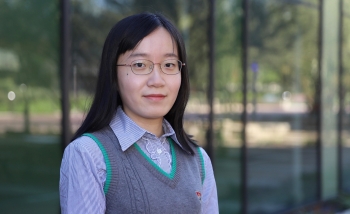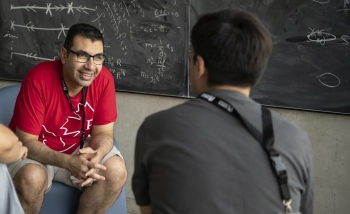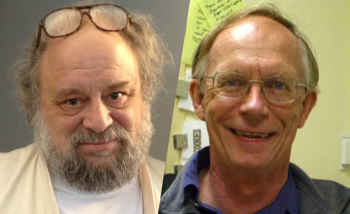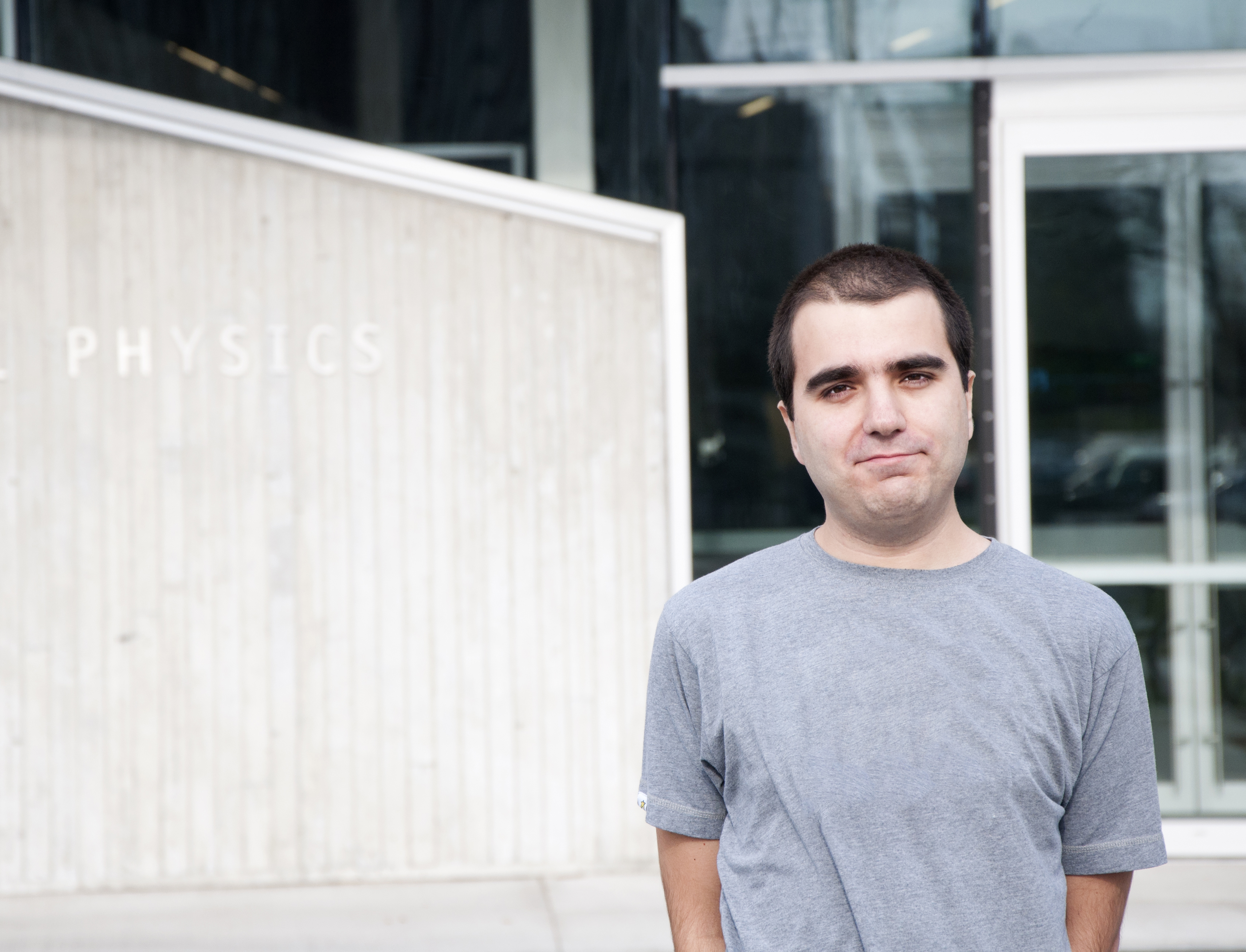Pedro Vieira has been tapped as a rising star in science: he has just been awarded a Sloan.
For 70 years, the prestigious Sloan Research Fellowships have been awarded annually to early career researchers in Canada and the United States. Sloan Fellows are widely viewed as people to keep an eye on, and with good reason: 42 of them have gone on to win Nobel Prizes.
“It’s an amazing list to be on,” says Vieira. “It’s an honour to be included.” Vieira will receive $50,000 from the Alfred P. Sloan Foundation to support his future research.
It’s not the first time Vieira – who is 32 years old – has made waves. He first came to the attention of the physics community while still a PhD student, when he and his collaborators found the first exact solution for the spectrum of a four-dimensional quantum field theory, a goal physicists had been working towards since the 1970s. The three papers arising from that work are now widely considered landmarks.
Then, only six months out of his PhD, Vieira obtained a faculty position at the Perimeter Institute for Theoretical Physics, as well as an adjunct faculty position at the University of Waterloo. It is almost unheard of for a young researcher to become a faculty member without first finishing a postdoctoral term or two.
“It was seen as a bold move for Perimeter to hire someone so young,” says Robert Myers, Perimeter’s Faculty Chair. “But Pedro was, and is, exceptional. And if it was a risk, it was one that has certainly paid off handsomely.”
At Perimeter, Vieira has continued to tackle the toughest and most long-standing problems of quantum field theory. His method has been to use a mathematical technique called holography to translate questions about four-dimensional field theories into questions about two-dimensional (2D) string theories. That makes it possible for him to tackle the questions through the use of integrability, a powerful mathematical technique for exactly solving 2D theories. Holography then relates the solution in two dimensions back to a solution in four dimensions.
It requires tremendous mathematical prowess and a rare physical intuition to follow the flow of ideas up and down the dimensions and through different theoretical lenses.
“Such mathematical talent and physical intuition don’t come together very often, and when they do, they tend to open up new paths for whole fields,” says Myers. “This is exactly what Pedro has done. We are very pleased to see the Sloan Foundation recognize him. He is an outstanding young scientist and I am sure that we’ll all be hearing much of him in the future.”
This is the second time that a Perimeter faculty member has received a Sloan Fellowship; condensed matter researcher Dmitry Abanin was a 2014 fellow.
Further exploration
About PI
Perimeter Institute is the world’s largest research hub devoted to theoretical physics. The independent Institute was founded in 1999 to foster breakthroughs in the fundamental understanding of our universe, from the smallest particles to the entire cosmos. Research at Perimeter is motivated by the understanding that fundamental science advances human knowledge and catalyzes innovation, and that today’s theoretical physics is tomorrow’s technology. Located in the Region of Waterloo, the not-for-profit Institute is a unique public-private endeavour, including the Governments of Ontario and Canada, that enables cutting-edge research, trains the next generation of scientific pioneers, and shares the power of physics through award-winning educational outreach and public engagement.
You might be interested in


Perimeter Hosts Strings 2023: Spotlighting new directions and uniting a community
September 22, 2023


